
Last week I was fishing, camping, and running lights on the Wind River. It was a little early for the spring chinook I was pursuing, and the wildflowers still thought it was late winter/early spring (the elevation was about 1100’). But it was a productive night at the lights, with over 20 species of moths, and some other interesting flying insects. Beyond appreciating their loveliness, I was more or less ignoring the Lappet moths, because they are a common visitor to my lights. But, while checking my list to see if I’d ever done a profile of Gluphisia severa, (I had, but my failing memory is why I finally compiled a permanently downloaded list on my phone of everything I have profiled) I realized I’d never done one on Phyllodesma americana, and that was an oversight that needed correction. Fortunately there were several and I was able to get a variety of photos.
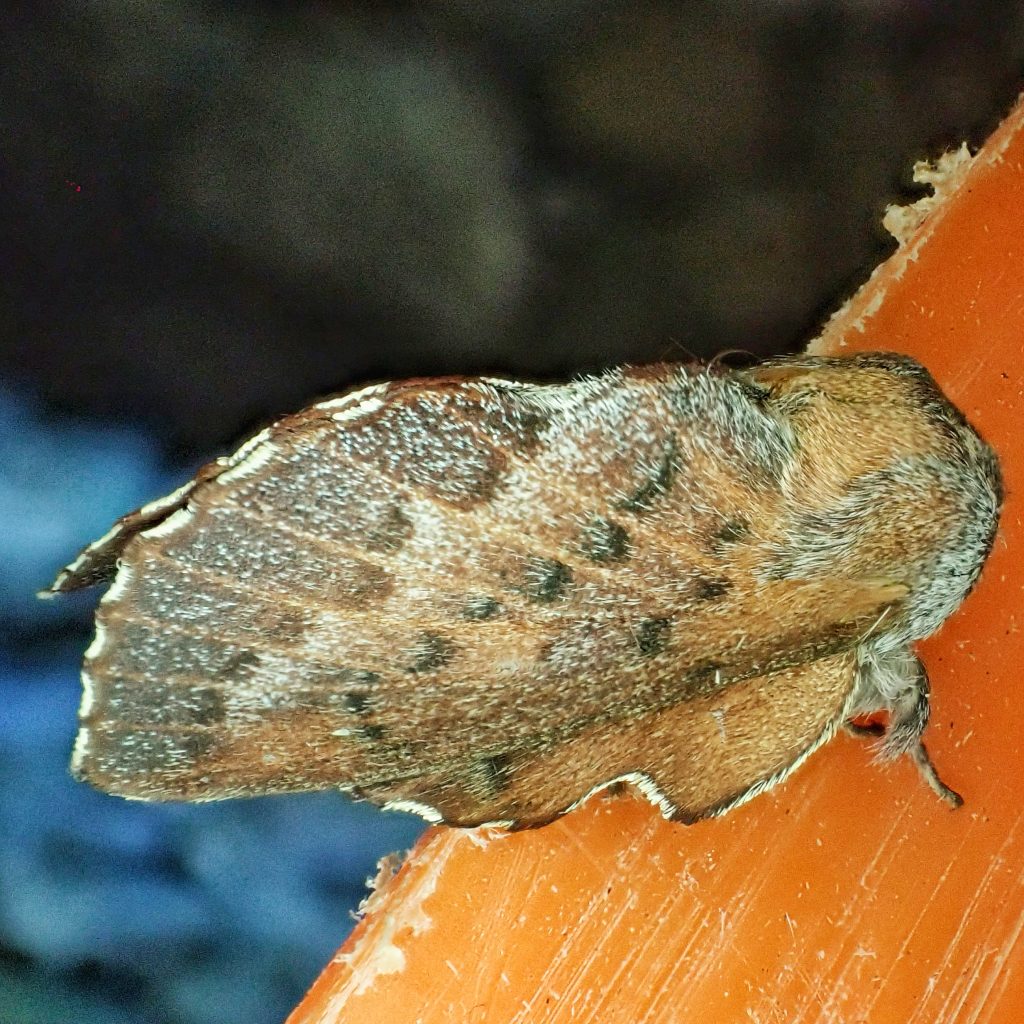
The first time I ever found one of these wonderful moths was on my and Pam’s honeymoon a little less than three years ago, when I was just becoming interested in moths. We were staying at a motel near Manzanita, Oregon, and after Pam fell asleep (middle aged honeymoons after 9+ years of cohabitation being somewhat different than those of our youth), I stepped outside to see what might be visiting the porch lights. When I saw one of these I wasn’t sure what I was even looking at, and because it was a full arms length over my head the idea that it was a moth, and not a weird fungus growing from the LP siding, didn’t occur to me until I blew up and examined the photo. I quickly took a few more and headed for the moth section in Merrill Peterson’s Pacific Northwest Insects, and found it almost immediately under Lasiocampidae in the guide to families at the beginning of the section on Lepidoptera.
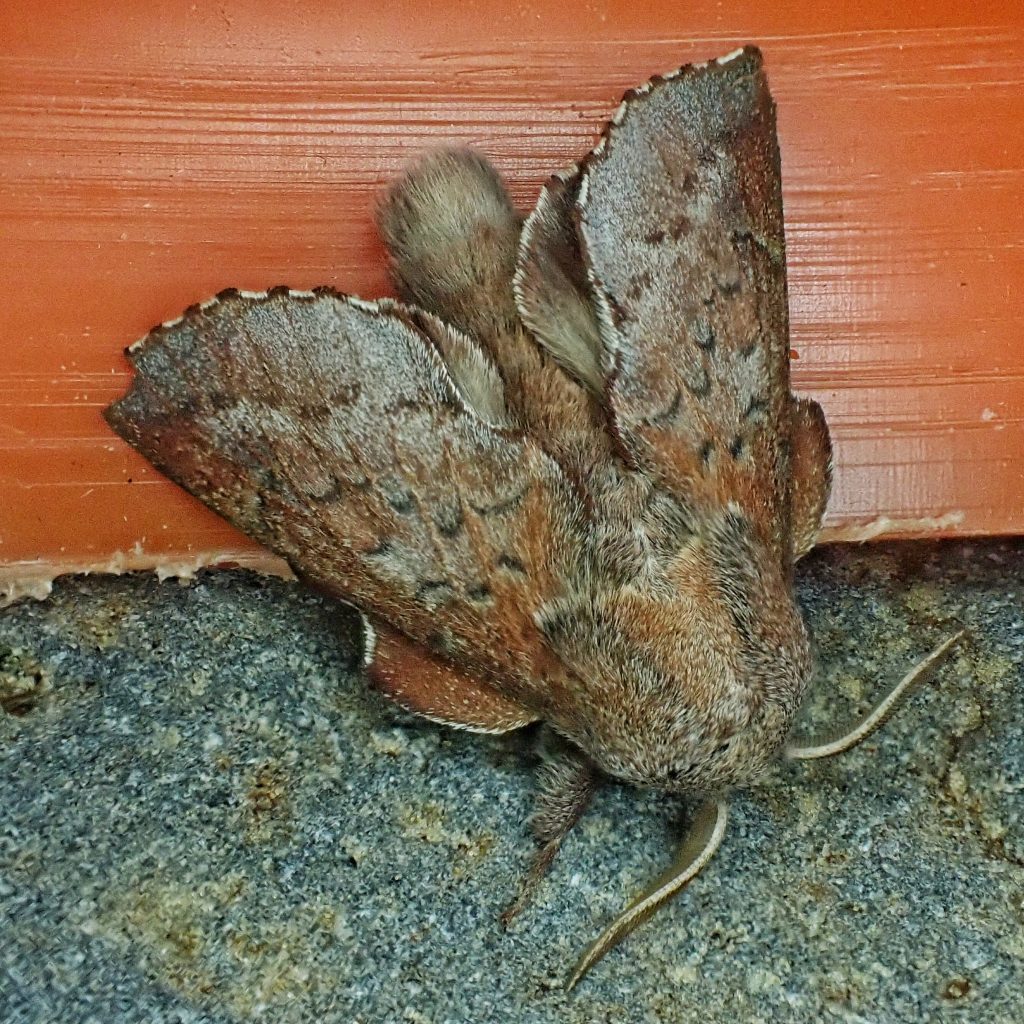
These are some of my favorite moths! With their beautiful coloring and symmetrical yet irregular form they are recognizable from several feet away. And they are settlers at the lights, seldom moving at all unless disturbed, and even then they are pretty phlegmatic about it. Dozens of times over the last few years I’ve had one settle on a section of my sheet, and even after the lights go out they will need to be shaken from the sheet in the morning (that first one at the motel in Manzanita, was still there almost until direct sunlight reached that spot around 8:30 the next morning). And with the wide range of larval hosts (at least 12 different genera in 5 hardwood families) they are almost always present when I run lights, and usually in fair numbers. So keep your eyes open for these beautiful creatures, as well as any other flying insects, whenever you are near fixed lights illuminating the darkness!
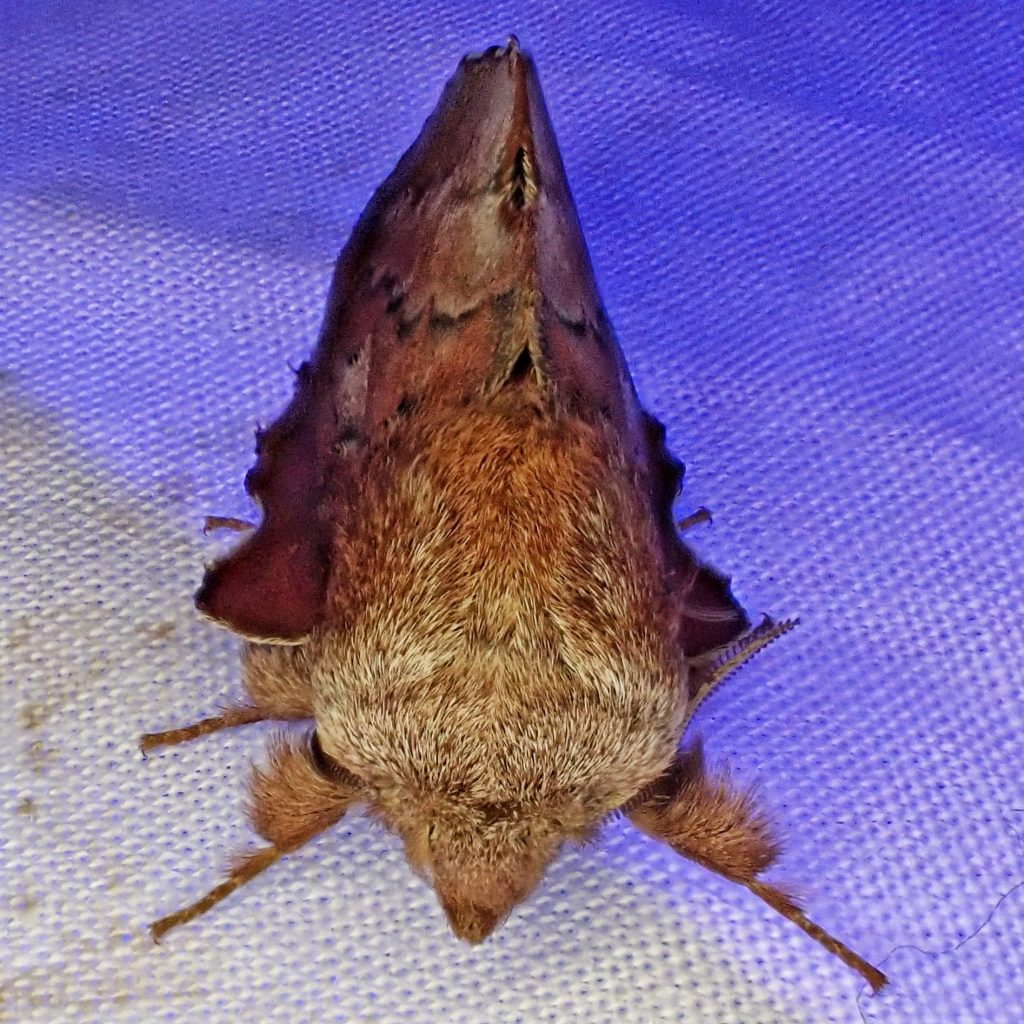
Updated Facebook note-For a variety of reasons, most of which have to do with regulating my blood pressure and freeing up significant blocks of time, as of May 15 I will not be routinely sharing links to these posts in many of the Facebook groups to which I belong. I am sorry for the inconvenience, but anyone wishing to see new profiles after that date can follow me on Facebook, since all posts will be shared to my timeline/wall/page. Please don’t attempt to ‘friend’ me- I have been inundated with spam ‘friend requests’ in the last couple days, and after receiving several hundred per day I am now unilaterally denying all requests. Or you can take advantage of the free subscription option on the website, and all new posts will be emailed to you.
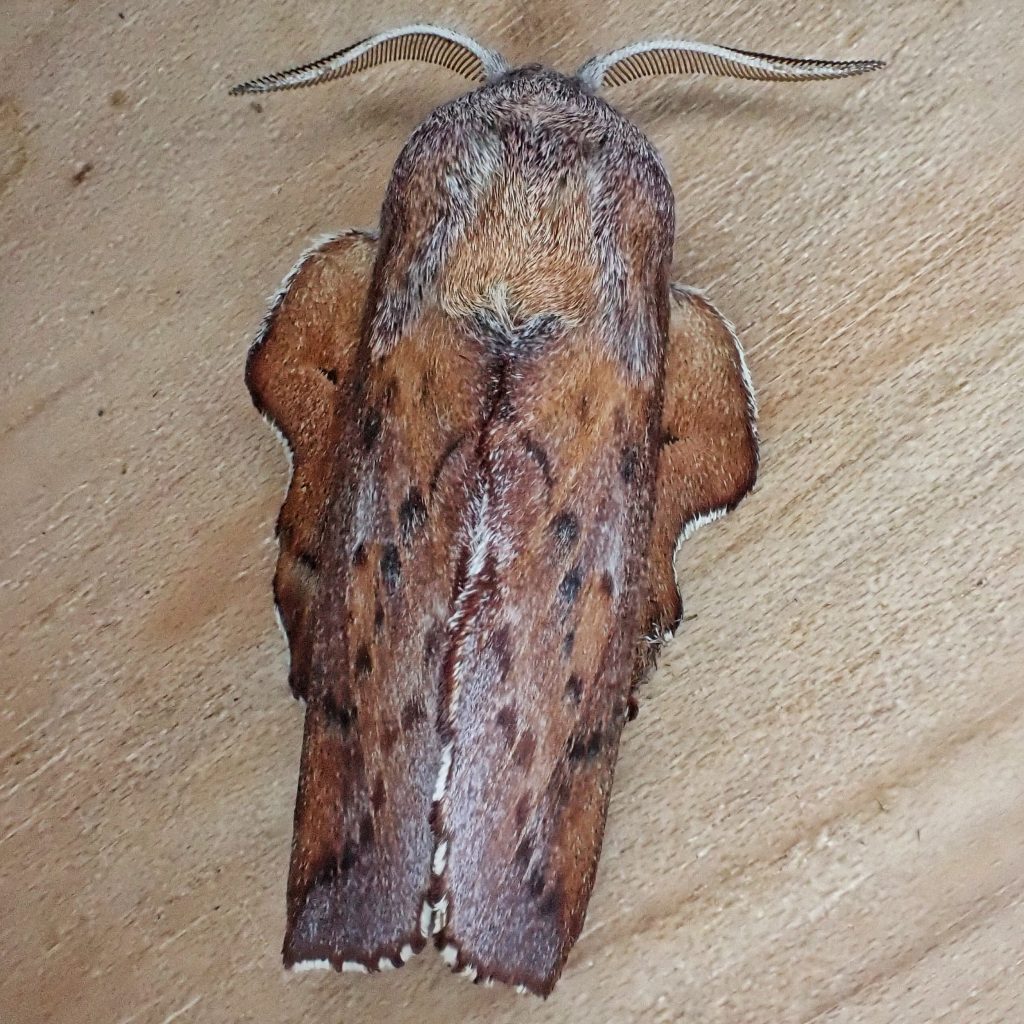
Description-Medium sized (fw length 14-17mm in males- 19-22mm in females) reddish brown and grey moth with an irregular resting posture wherein the outside of the hindwings are exposed along the substrate; forewings are redder on the basal half, blue gray near the apex, with black dots or dashes for the transverse lines, and a scalloped, black and white checked margin; forewings have a pair of flanges on the rear margin, which meet during the resting pose to give it a ‘humped’ appearance; hindwings also redish brown and grey with checked margins, and also have a flange, that is next to a deeply concave area; body is grey
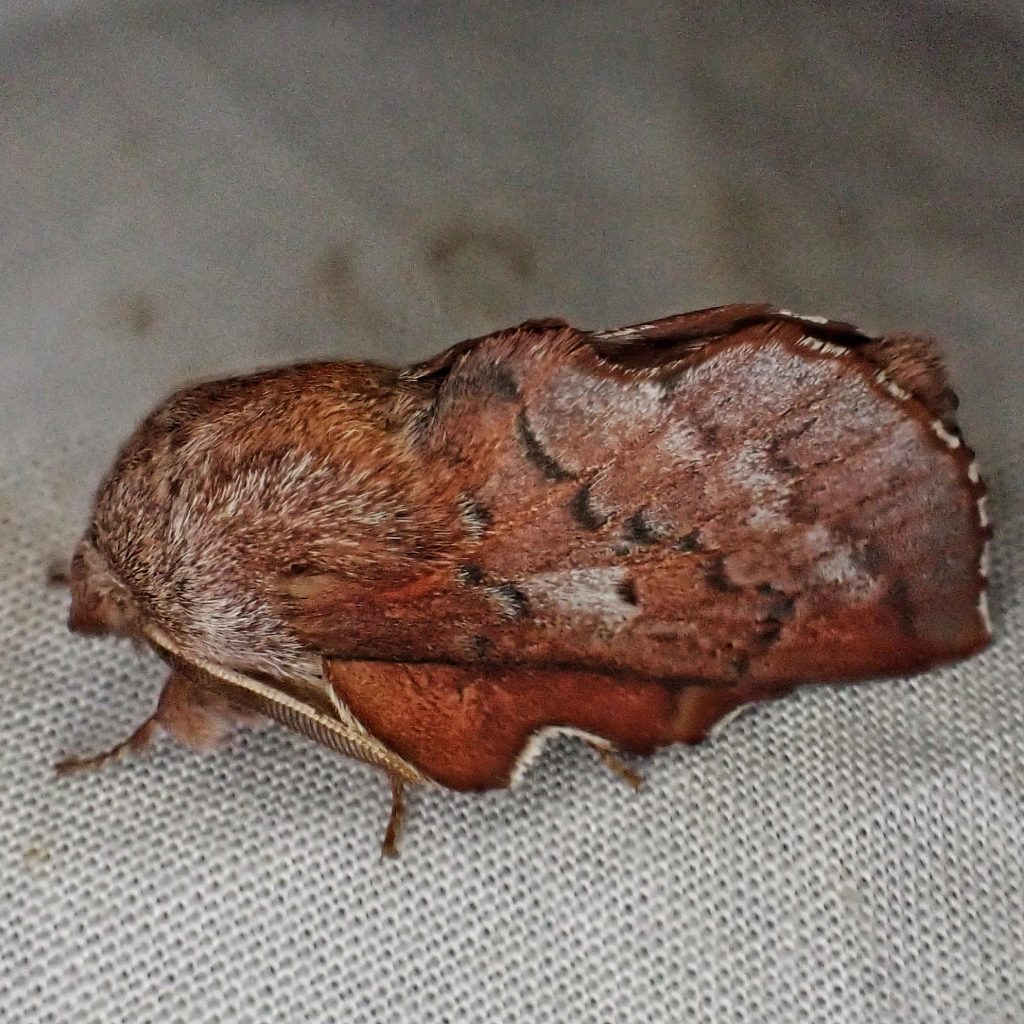
Similar species-The only moth that is similar in our region is Phyllodesma coturnix, which is slightly smaller and is only found in sw Oregon/nw California in our region.
Habitat-mixed and hardwood forests and woodlands where at least one of their many hosts occur.
Range-North America; region wide in appropriate habitat.
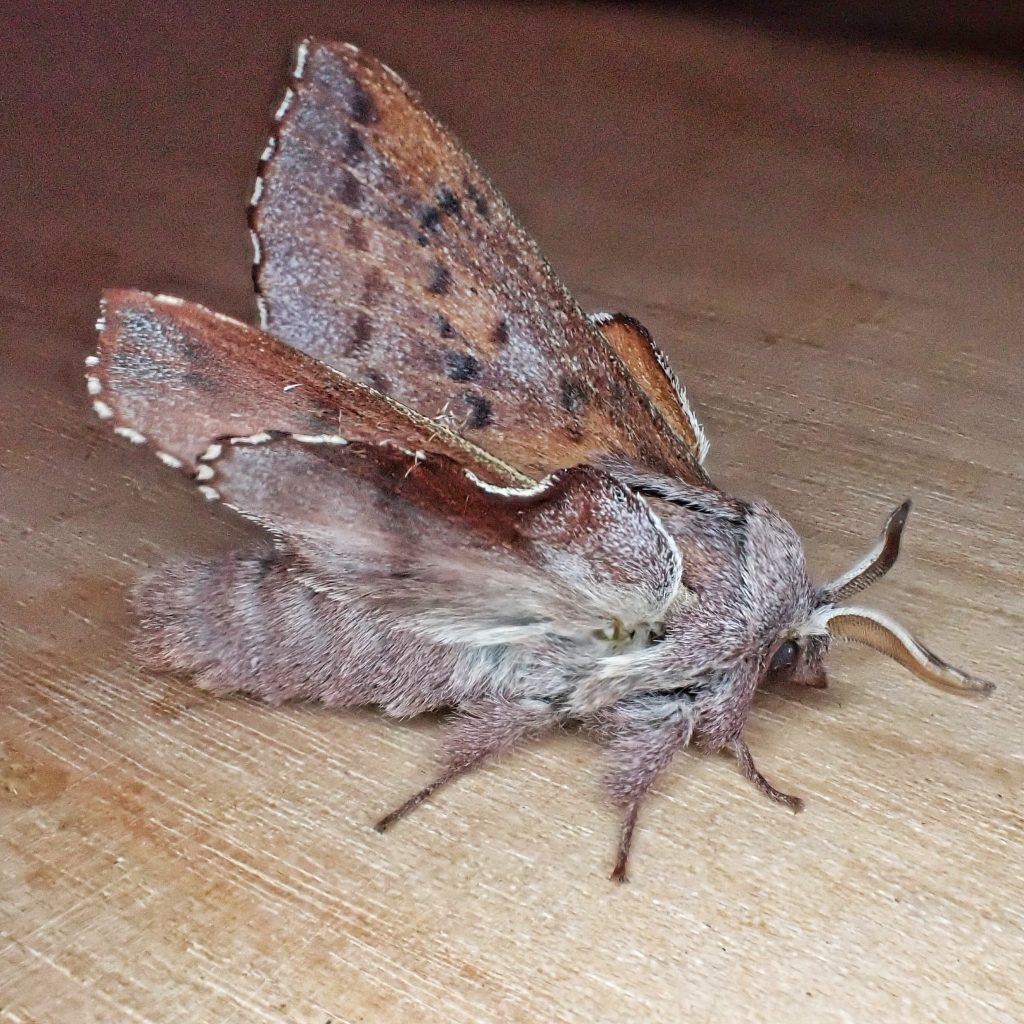
Eats-Adults have only vestigial mouthparts, and do not feed; larval hosts include trees and shrubs in the families Rosaceae, Salicaceae, Rhamnaceae, Betulaceae, and Fagaceae.
Eaten by-Probably by insectivores of all classes
Adults active-March through August, with peaks in May and July
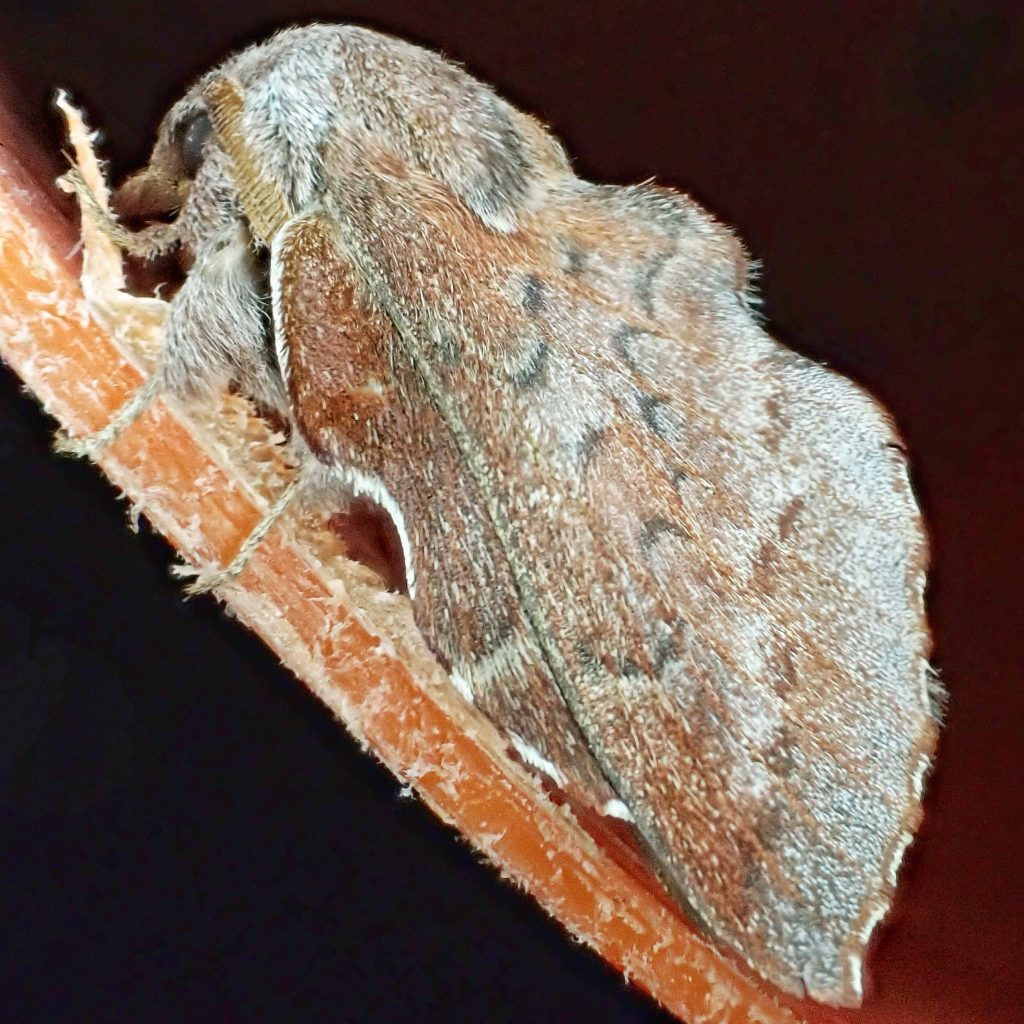
Life cycle-Seems to be bivoltine in our region; second generation probably overwinters as a pupa, and ecloses in the spring.
Etymology of names–Phyllodesma is from the Greek words for ‘bound leaves’, and refers to the resemblance of resting lappet moths to a cluster of leaves. The specific epithet americana refers to it being the first Phyllodesma identified in the US. Lappet moths are named for the lobes or flaps of flesh (lappets) on the caterpillars that hang down over the prolegs.
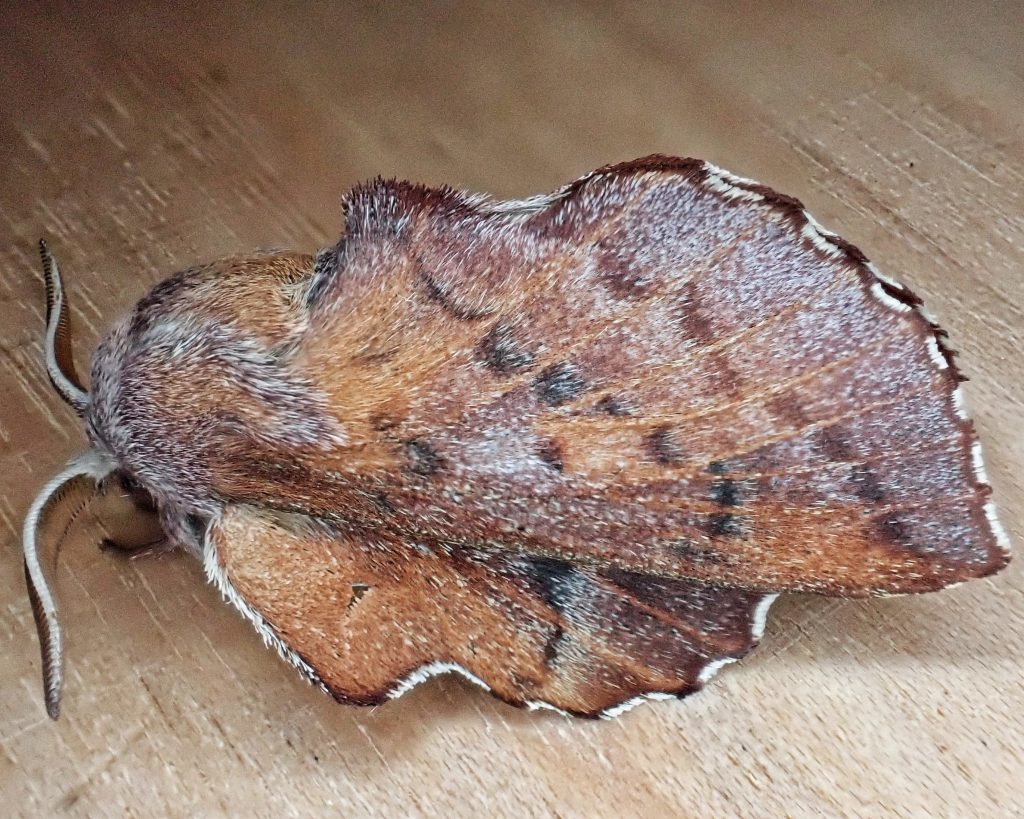
https://bugguide.net/node/view/20258
https://www.insectidentification.org/insect-description.php?identification=American-Lappet-Moth
http://mothphotographersgroup.msstate.edu/species.php?hodges=7687
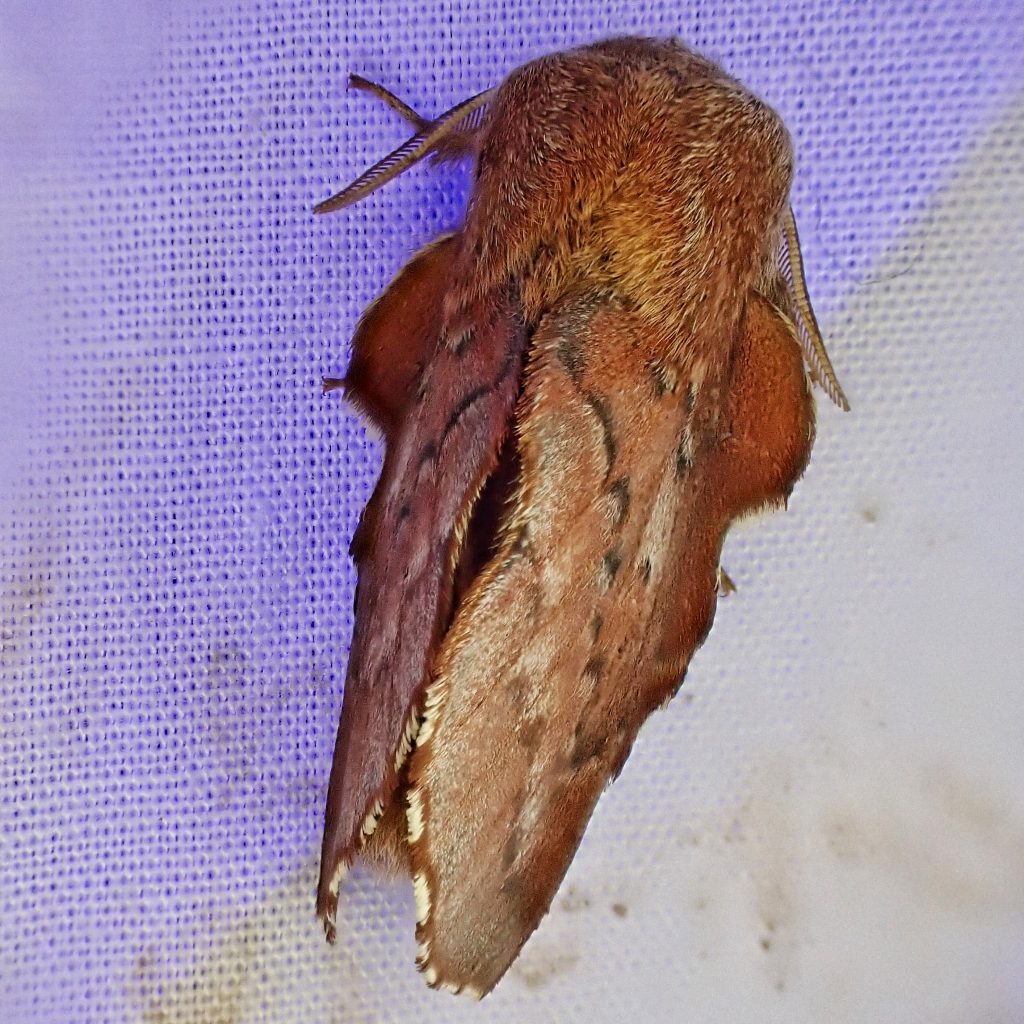
2 thoughts on “Phyllodesma americana (American Lappet Moth)”